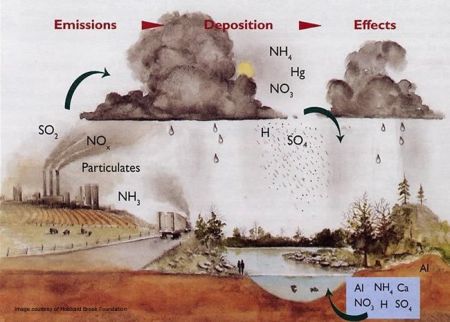Our culture is all too quick to prejudge in favor of high speed, and nowhere is our prejudice so evident as in education. The idea of "slow learning" would probably seem to most people to be something to be avoided. Children who learn slowly, after all, are called disadvantaged.
I've been doing some reading and thinking about learning, though, and I have a bone to pick with our speed prejudice, particularly as it relates to environmental issues. To begin, I'd like to cite David Orr's lecture on "Environmental Literacy," in which he distinguishes between cleverness and intelligence, giving the nod to intelligence in part because it is slower:
From an ecological perspective it is clear that we have often confused cleverness and intelligence. Cleverness, as I understand it, tends to fragment things and to focus on the short term. The epitome of cleverness is the specialist whose intellect and person have been shaped by the demands of a single function. Ecological intelligence, on the other hand, requires a broader view of the world and a long-term perspective. Cleverness can be adequately measured by SAT and GRE tests, but intelligence is not so easily computed. In time, I think we will come to see that true intelligence tends to be integrative and often works slowly while mulling things over. Further, intelligence can be inferred, according to Wendell Berry in Standing By Words, from the “good order or harmoniousness of [one’s] surroundings.” In other words, the consequences of our actions are a measure of our intelligence, and the plea of ignorance is no good defense. Because some consequences cannot be predicted, the exercise of intelligence requires forbearance and a sense of limits. Ecological intelligence, in contrast to mere cleverness, does not presume to act beyond a certain scale at which effects can be known and unpredictable consequences would not be catastrophic.While I don't care for Orr's diction (cleverness and intelligence seem too close in terms of connotation and valence in my view), his more general point that there exists a kind of quick intelligence and a kind of slow intelligence is well taken. I would suggest further that his distinction be extrapolated a bit: there's also a kind of quick learning and a kind of slow learning, both of which are good. Children who suffer from learning disabilities are simply "slower" (than average) when it comes to the quick kind of learning. The slow kind of learning can't really be measured in the same way. In fact, I believe it requires an entirely different conception of time.
Clive Holtham, et al. n their article Slow Knowledge: The Importance of Tempo in Debriefing and in Individual Learning [.pdf], discuss some of the key qualitative differences between "fast time" and "slow time." Without getting too deep into their work (which is worth at least skimming), they specifically advance the notion of tempo (fast tempo vs. slow tempo) as a conceptual overlay for understanding time as it relates to learning. Tempo means rhythm, and it is precisely the notion of rhythm as it relates to learning which I want to refine.
We currently measure quantity of learning (quite apart from quality, which has its own issues) in terms of credit/hours, instruction/hours, or something similar. We measure, in other words, learning time from the instructor's point of view. Or, to put it slightly differently, we measure time from the subject matter's point of view. As if the sheer number of hours a subject matter and a mind were in contact were meaningful. And it is, under certain conditions and within limits.

Student learning + instructor timetable = VERY slow learning.
I'd like to propose a new measure for quantity of learning. (Not a substitute for credit/hours, but a complement.)
The thought/day: a day in which specific, conscious mental attention is brought to bear on a particular idea-cluster. Thought/days are typically measured within a larger context, just as credit/hours are. One generally doesn't simply assign 50 thought/days to a project; one assigns 5 thought/days per week for 10 weeks.
The thought/day attempts to guide and quantify reflection rather than the co-presence of "learner" and "subject matter." Naturally, thought/days have no significance unless the learner is committed to reflection. Since, however, the student is the independent actor and the instructor the dependent actor in a teaching system, thought/days don't offer the temptation of education-as-body-processing which is all too common under credit/hour regimes.
Again, though, thought/days cannot replace credit/hours, but they can supplement them. They are especially helpful in disciplines such as philosophy, theology, and creative writing, in which reflection (spiritual digestion) is more important than the absorption of information.
